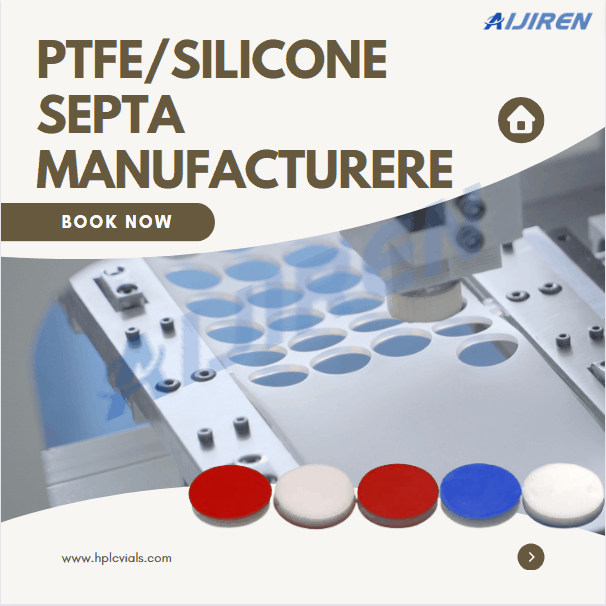The Significance of Headspace Gas Chromatography Analysis
Headspace gas chromatography makes it possible to test even volatile substances for the presence of specific compounds by using and analyzing the associated vapor phase. It’s a technique that has been around since the 1950s and is still useful today.
What is gas chromatography?
Gas chromatography is a method of separating and detecting the chemical components of a sample mixture. This analytical technique can be used to determine the presence or absence of specific chemical compounds, usually organic molecules or gases.
It works by injecting a gaseous or liquid sample into a mobile phase, sometimes called a carrier gas. This is then passed through a stationary phase and heated. A computerized detector measures the eluent produced by the process.
Why Use Headspace Gas Chromatography?
There are many major advantages to using headspace analysis when testing volatiles in liquid or solid samples, including the ability to test the headspace gas without destroying the sample.
The use of headspace technology can eliminate the lengthy and cumbersome sample pretreatment process, avoid the interference of impurities introduced by organic solvents on the analysis, and reduce the contamination of the column and injection port; Headspace chromatography with its simple and practical advantages in environmental testing (such as drinking water in the volatile halogenated hydrocarbons and industrial wastewater in the volatile organic compounds), the detection of organic residual solvents in the drug, food, the court of science, petroleum chemical industry, packaging materials, coatings and brewing industry analysis and other fields have been widely used.
What do you pay attention to?
In the process of using headspace gas chromatography for analytical tests, the following matters should be noted:
1、Because the carrier gas entering the headspace and the vaporized sample enter the gas chromatography at the same time, the gas used for headspace shall be purified;
2、 The headspace vial heating temperature, quantitative tube temperature, the temperature of the transmission line should be from small to large, the temperature of the transmission line and the sample inlet to maintain consistency;
3、The setup time should be noted that the time of sample filling the quantitative tube and the time of sample injection should be long enough;
4、Headspace injector pressure adjustment if manual, shall record the sample pressurization and carrier gas pressure values, so as to avoid pressure changes due to changes in valve status;
5、The spacer mainly play a sealed feed, cleaning the role of the feed needle, the general spacer can reach more than one hundred times the life of the feed, different manufacturers of different materials life varies, the spacer can reach more than 400 times the life of the red silicone spacer is generally one hundred times. If you find that the inlet pressure drops, you can check whether the spacer is seriously worn, sealing deterioration, if necessary, replacement. Separator cushion debris can lead to background elevation, and may contaminate the liner tube, clogging column, should be replaced frequently, do not have to wait until the degree of must be replaced. Many color friends in the installation and replacement of the spacer is generally screwed too tight, which will lead to too much shrinkage of the spacer, hardened, into the sample spacer is prone to produce debris, the life of a substantial decline, generally not leakage of air can be a little tighter;
6、Liner tube in the GC mainly plays the role of the sample vaporization chamber, the sample is vaporized in the liner tube and was taken into the gas phase, there are de-activated and not de-activated points, but also shunted / not shunted, not shunted, shunted, direct injection, directly connected, focused, PTV and other points. Unscheduled replacement or failure to use correctly will result in poor peak shape, solute discrimination, poor reproducibility, sample decomposition, ghost peaks and other results. Maintenance of the liner tube is mainly cleaning, silanization and rational use of glass wool.
Back to List
-
 下午4:09Weighing the Pros and Cons of PTFE/Silicone Septa
下午4:09Weighing the Pros and Cons of PTFE/Silicone Septa -
 下午4:05Decoding Vial Discard Guidelines: Ensuring Precision in Chromatography
下午4:05Decoding Vial Discard Guidelines: Ensuring Precision in Chromatography -
 下午5:01Navigating Micro Inserts for HPLC Vials: A Comprehensive Guide
下午5:01Navigating Micro Inserts for HPLC Vials: A Comprehensive Guide -
.jpg) 下午2:02Common faults and solutions of automatic samplers(2)
下午2:02Common faults and solutions of automatic samplers(2) -
 下午5:08Ensuring Sample Integrity: Navigating EPA Storage Vials Stability Guidelines
下午5:08Ensuring Sample Integrity: Navigating EPA Storage Vials Stability Guidelines

